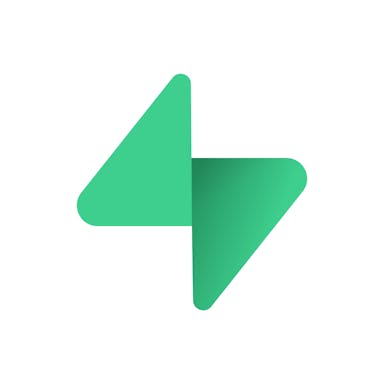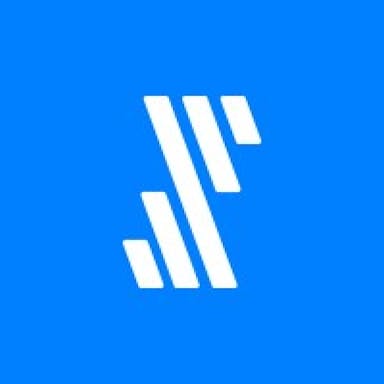Thesis
The web and mobile app development markets are growing significantly, with businesses across various industries recognizing the vital role of digital platforms in connecting with their audiences. The global web development market was valued at $56 billion in 2021 and is projected to reach $130.9 billion by 2032, growing at a CAGR of 8%. Similarly, the global mobile app development market was valued at $240.4 billion in 2023 and is expected to reach $666.1 billion by 2032, exhibiting a CAGR of 12.1%. As companies seek to capitalize on this trend, they face the challenge of developing web and mobile applications quickly and cost-effectively.
Backend-as-a-service (BaaS) has emerged to address this challenge. BaaS automates backend development by providing pre-built, reusable components for common backend functionalities, such as authentication, file storage, and databases. By offloading backend infrastructure to third-party providers, companies can avoid scaling issues, accelerate development, and reduce upfront costs. BaaS providers handle authentication, database management, real-time updating, storage, and hosting, allowing developers to focus on front-end application code and user-facing features while mitigating security concerns. As a result, the global BaaS market is expected to grow from $5.1 billion in 2023 to $23.3 billion by 2032, representing a projected CAGR of 18.4%.
Supabase is an open-source BaaS platform built on PostgreSQL (a.k.a. Postgres), which is an open-source relational database. Supabase aims to provide developers with real-time capabilities and granular control over backend infrastructure. The platform's open-source nature allows developers to integrate the system into their unique infrastructure, eliminating vendor lock-in and ties to a single cloud vendor.
Supabase's suite of backend services, including database management, authentication, file storage, and real-time updates, enables developers to build applications that are intended to be scalable and secure. Without APIs or SDKs (software development kits) offered by BaaS vendors, developers are often forced to manage servers, virtual machines, or containers capable of accommodating large volumes of data and traffic. By eliminating the complexities of server-side development, Supabase enables developers to focus on creating compelling user experiences and delivering applications to market faster.
Founding Story
Paul Copplestone (CEO) and Ant Wilson (CTO) founded Supabase in January 2020.
Before Supabase, Copplestone was CTO of Singapore-based startup Nimbus for Work. While there, he built a chat application using Google’s Firebase, a mobile and web app development platform. The Nimbus for Work team needed an architecture capable of supporting the functionality of WhatsApp, including features like voice messaging. However, the majority of "chat-as-a-service" providers failed to offer the necessary flexibility. Firebase's Cloud Firestore database was too slow and had limited querying options. To overcome these challenges, Copplestone devised a solution by attaching serverless functions to Firestore, enabling the team to replicate data into a Postgres database and eliminate Firestore.
After experiencing scaling issues, Copplestone migrated Nimbus from Firebase to Postgres, but found that Postgres lacked the real-time functionality that made Firebase so useful for chat applications. Copplestone’s solution was to build an open-source real-time engine on top of Postgres, adding the missing functionality. When he posted the project on Hacker News in December 2020, it gained early traction, signaling a potential opportunity. At the time, Copplestone mentioned that the post received 100 stars, 62 upvotes, and 21 comments on GitHub, which was encouraging enough for Copplestone to productize the real-time Postgres engine.
Copplestone pitched the idea to Wilson, a friend he had lived with previously in Singapore while both were participating in the Entrepreneur First Accelerator Program. Wilson came from a software engineering background and had co-founded two companies, Crypto Squad and STYLINDEX, prior to Supabase. He was persuaded by Copplestone's vision and joined as co-founder and CTO in January 2020. The two were well aligned in their approach to building products with Wilson noting that after a long discussion about an idea Copplestone would immediately start coding.
The early Supabase team leveraged their previous experience building developer tools and assembled a roster of technical talent. Key hires included Steve Chavez, a maintainer of PostgREST, which Supabase uses to automatically generate APIs from Postgres schemas. In fact, many of the first ~50 employees came from the open-source community. This meant that Supabase's first marketing and non-technical hires were developers themselves, a fact that resonated with users. This has been the company’s hiring strategy from the beginning — when a developer from the open-source community builds something that gains sufficient popularity, Supabase tries to hire them.
After starting Supabase in January 2020 and writing their first few lines of code, Copplestone and Wilson raised a $100K pre-seed round from angel investors. However, in its first few months, the company struggled to gain traction. By April 2020, a few months after its launch, Supabase only hosted eight databases in total.
However, things started to quickly improve in May 2020 after Copplestone changed the company tagline on the website from "real-time Postgres" to "the open-source Firebase alternative." This change in positioning proved to be pivotal to the marketing efforts of the company. Because of this new tagline, Supabase scaled from eight hosted databases to eight hundred within three days. Similarly, Supabase's early users posted a link to Supabase on Hacker News entitled "an open source Firebase alternative", and the post received over 1.1K upvotes. Supabase also joined YC’s summer 2020 cohort.
Between May and July 2020, the Supabase team shipped features ranging from user management, row-level security, updates to the relational database UX, and database backups. Before announcing its beta in December 2020, Supabase confirmed that its read and write capabilities bested Firebase by 3x. By the end of Supabase's alpha in July 2020, the platform hosted over 3K databases and had nearly 5.5K GitHub stars.
Product
Supabase provides a suite of tools for developers to build web, mobile, and AI applications. Its core offerings include a Postgres database, user authentication and authorization, serverless storage & functions, real-time capabilities, and toolkits for developing AI applications. Supabase also supports integrations from Cloudflare Workers, Resend, Snaplet, Vercel, BigQuery, and more.
Supabase's core value proposition is to simplify application development by providing a full-featured open-source alternative to Firebase. Supabase aims to build a cloud-native Postgres platform that powers components developers need to build applications quickly and scale large production workloads no matter how big or small the use case is.
Database
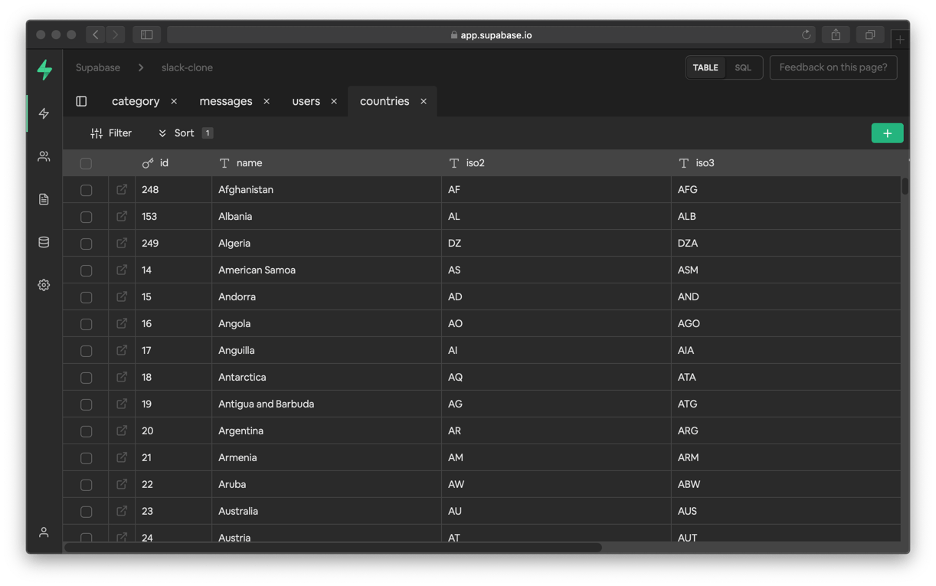
Source: Supabase
Every Supabase developer project comes with a full Postgres database. Developers can leverage the Supabase dashboard to manage data in a spreadsheet-like interface, explore table relationships, clone tables, and use the built-in SQL editor to run queries.
To further extend the functionality of Postgres databases, developers can enable 50+ extensions for capabilities like full-text search, auditing, cryptography, indexing, notifications, search, and testing. Additionally, pgvector, which is a PostgreSQL extension that enables developers to store and query vector embeddings. For context, vector embeddings are numerical representations of text or other data (such as images or audio) generated by embedding models, which allow for semantic comparisons and similarity searches.
Supabase's database offering includes a key feature called Read Replicas, which enables developers to deploy read-only clones of the primary database across multiple regions. This feature enhances performance, reduces latency, and optimizes resource management for applications with a global user base. Developers can use a read replica for more analytical queries and the primary database for create, read, update, and delete (a.k.a. CRUD) operations.
Read Replicas are kept in sync with the primary database through replication, which means copying data from one database to another. Because replication is asynchronous, it enables transactions on a primary database to not be blocked.
Authentication (Auth)
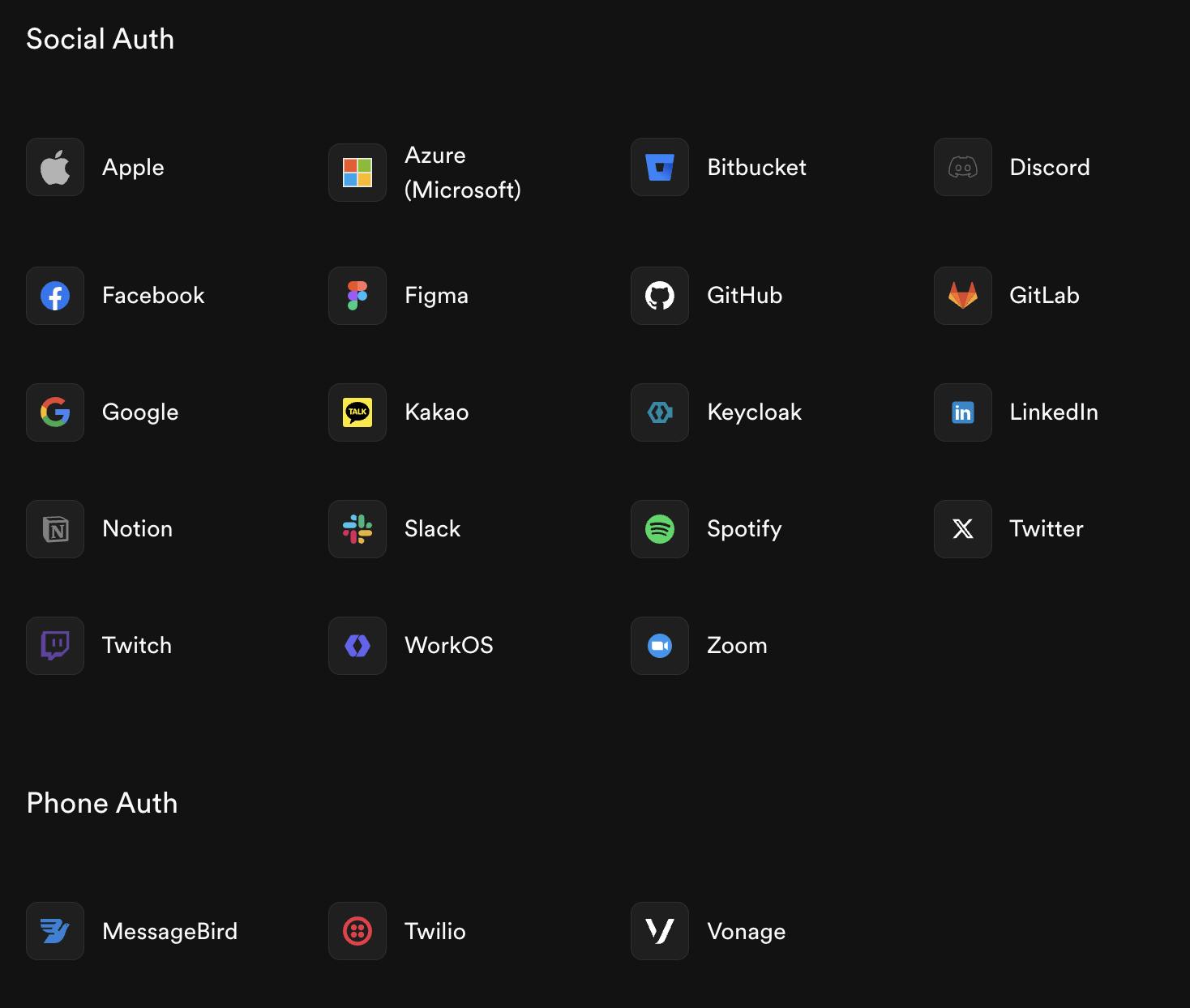
Source: Supabase
Supabase Auth provides a single product for user authentication. It offers a suite of login methods, user management tools, and security options that integrate with the broader Supabase ecosystem. The company also offers login method integrations for Social Login (OAuth), which is commonly used for logging into a social media account from a third-party app, and Security Assertion Markup Language (SAML), which is a protocol that allows users to access multiple web applications, using one set of login credentials. Supabase’s default implementation of authorization leverages Postgres’s Row Level Security (RLS), which allows highly customizable authorization rules to meet business needs.
Supabase Auth also uses JSON Web Tokens (JWTs) to authenticate users and integrates with RLS to allow developers to write granular access policies with SQL.
One of the key features of Auth is its ability to simplify access control to a database through a REST API. The REST API enables developers to connect to a Postgres database through a restful interface, which is a uniform interface that uses HTTP requests to access and use data. Any data requests that a developer makes are automatically sent with a user’s Auth Token. This token works together with RLS policies to control database access on a row-by-row basis, allowing for end-to-end security from the browser to the database.
While developers can use Supabase Auth as a standalone product, Auth can also integrate with the rest of the Supabase ecosystem, utilizing a Postgres database and storing user data along with other relevant information in a special schema. Users can connect data to their tables using triggers or foreign key references.
Supabase Auth is compatible with several other authentication methods, including social and phone authentication via third-party providers (Apple, Azure, Bitbucket, Discord, Facebook, Figma, GitHub, GitLab, Google, and Kakao).
Storage

Source: Supabase
Supabase Storage simplifies the process of storing files like images, videos, and documents. Developers can upload files and serve them to users via a global Content Delivery Network (CDN). A CDN is a network of servers distributed globally that deliver content to users from the nearest physical location to reduce latency.
Supabase Storage has a dashboard for managing files. Developers can organize files into buckets (like folders), set access controls, and see detailed logs of storage API requests. The dashboard integrates with the rest of the Supabase ecosystem, so developers can connect storage access to auth policies like RLS.
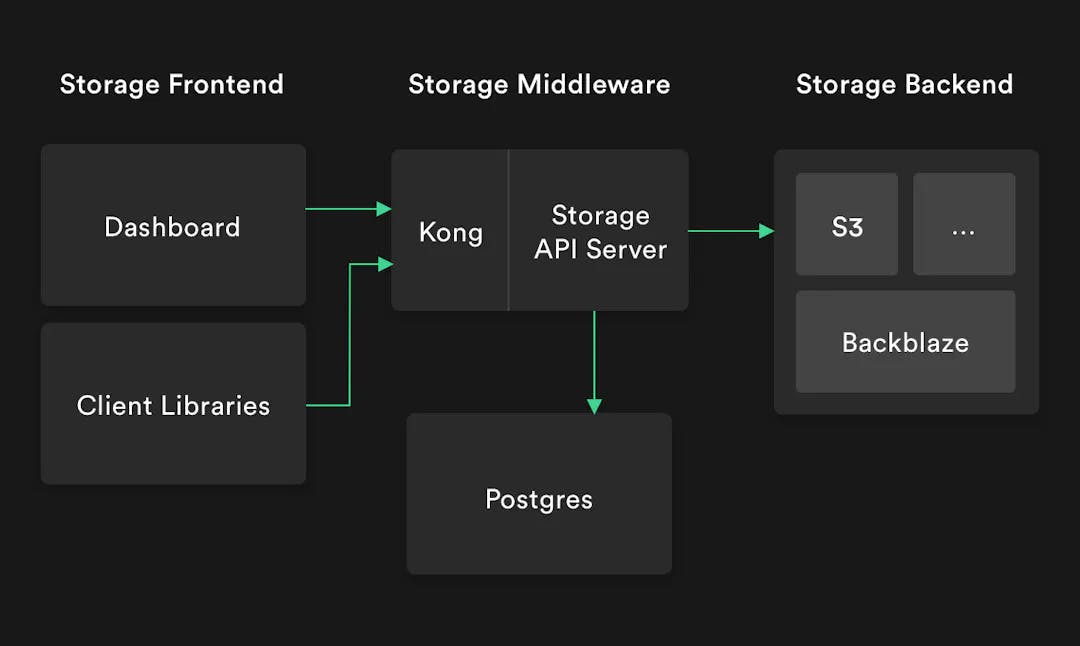
Source: Supabase
Edge Functions

Source: Supabase
Supabase Edge Functions enable developers to author, deploy, and monitor serverless functions. Edge Functions can be used to perform various tasks, such as processing webhooks or integrating with third-party services like Stripe. Edge Functions are designed to be globally distributed, ensuring low latency and optimized performance for users worldwide.
Edge Functions are developed using Deno, a secure runtime for JavaScript and TypeScript. For context, TypeScript is a programming language that builds on JavaScript by adding static type definitions, making the code easier to understand and maintain. Deno provides a comprehensive set of tools for developers, including built-in support for TypeScript, ES modules (a standardized way to structure and share code), test runners, formatters, linters (tools that analyze code for potential errors), bundlers, and a package manager.
One of the key advantages of using Deno for Edge Functions is its focus on security. Deno executes code within a secure sandbox, ensuring that functions can't access sensitive resources like environment variables, networks, or filesystems without explicit permissions. The added security layer helps protect developers and end-users from potential vulnerabilities. Additionally, because Edge Functions are developed using Deno, developers can easily migrate their code in and out of Supabase, reducing the risk of vendor lock-in. The disadvantage of using Deno is that it’s less supported and used in the developer community compared to Node, which allows developers to write JavaScript code that runs directly on a computer process rather than a browser. Additionally, Deno has a smaller ecosystem of libraries, frameworks, and tools.
Beyond building simple CRUD (create, read, update, delete) applications, Supabase Edge Functions help developers connect to any database, process data in real time, and build complex workflows. Edge Functions extend application functionality, adding features to applications that might otherwise require a separate server-side application.
Realtime
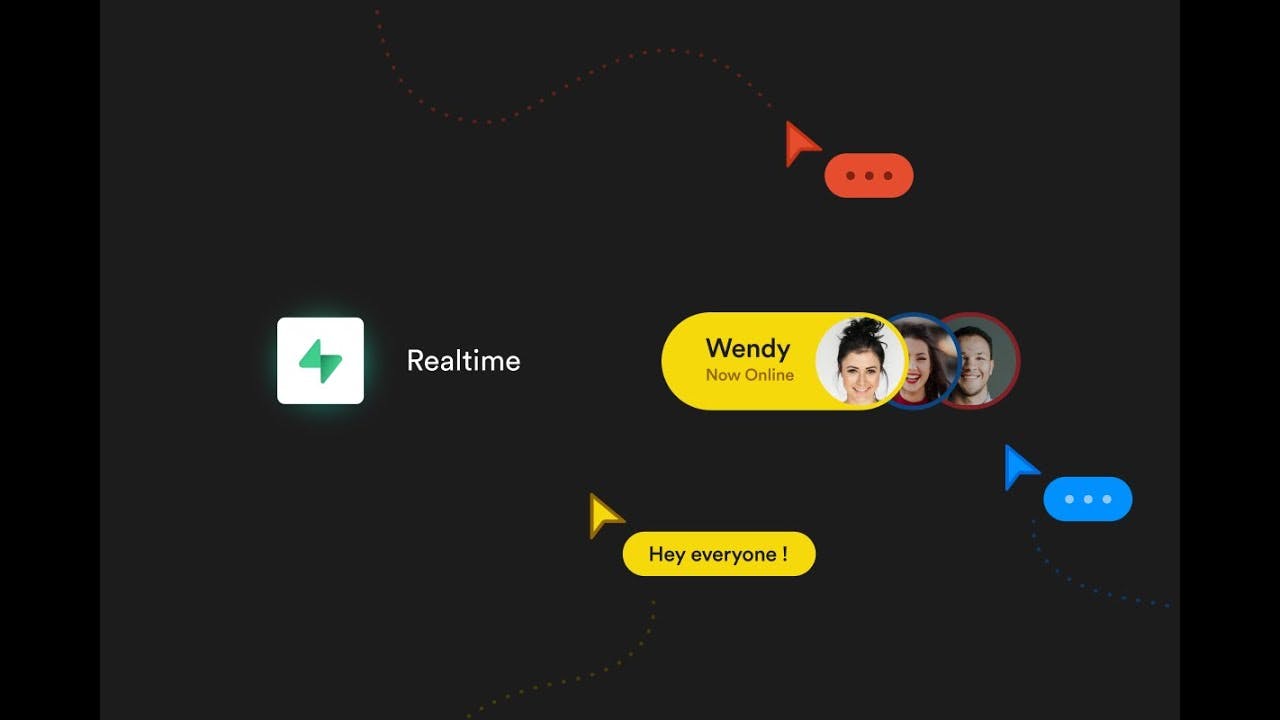
Source: Supabase
Supabase Realtime enables developers to add real-time applications with collaborative features. It allows users to send and receive messages instantly (Broadcast), track online presence (Presence), and synchronize shared states between clients using PostgreSQL's replication. Realtime is built on a globally distributed cluster of servers, ensuring low latency and reliable performance for users worldwide.
At the core of Realtime are Channels, which function similarly to chatrooms in popular messaging apps like Discord or Slack. Users can join a channel by defining a unique topic, and once connected, they can see who else is online and exchange messages in real time. Channels provides a publish-subscribe (pub/sub) architecture, where publishers categorize messages into classes that are then received by subscribers.
AI & Vectors

Source: Supabase
Supabase AI & Vectors is an open-source toolkit for building AI applications using PostgreSQL and pgvector.
One of the key features of Supabase AI & Vectors is its ability to generate high-quality text embeddings using Supabase Edge Functions and Transformers.js. This allows developers to execute Hugging Face models, a popular library for natural language processing, directly on the server side without relying on external APIs. Supabase provides various templates and resources to facilitate tasks such as headless vector search, image search using OpenAI's CLIP model, and image captions using Hugging Face inference.
Supabase AI & Vectors supports three main types of search:
Semantic search focuses on the meaning behind user inputs rather than specific keywords, utilizing machine learning to capture the intent and context of the information. This approach handles nuances like synonyms, phrasing variations, and word relationships.
Keyword search is more precise, requiring results to directly contain the search terms.
Hybrid search combines both semantic and keyword search using a technique called fusion, where results from both methods are merged based on a ranking or scoring methodology, such as reciprocal ranked fusion (RRF).
In August 2024, Supabase introduced postgres.new, an in-browser Postgres sandbox that combines a Postgres database with AI assistance. This new feature aims to help developers integrate Postgres databases directly within their web browsers, without the need for local installations or configurations. postgres.new leverages PGlite, a lightweight version of Postgres compiled to Web Assembly (WASM), enabling database functionality in various contexts, such as testing, local development, and remote or in-browser environments.
Each database in postgres.new is paired with a large language model (LLM), an AI system that understands and generates human-like text. This integration enables users to perform tasks like importing CSV data and generating reports, charts, and database diagrams. The LLM has full control over the database, automatically making changes and resolving SQL errors, while minimizing data loss risks. Additionally, postgres.new supports native chart generation, allowing users to create visualizations by simply including the word "chart" in their query. With pgvector enabled by default, developers can also create and query vector columns, and generate text embeddings using Transformers.js, opening up possibilities for advanced AI applications.
Market
Customer

Source: Supabase
Supabase's ideal customer profile consists of developers and businesses seeking to rapidly build and scale applications without the complexity of managing backend infrastructure. These customers range from small startups to large enterprises across various industries. Notable customers include GoPuff, Udio, Krea, Humata, Pika, 1Password, Mozilla, Johnson & Johnson, and PwC.
Before Supabase, customers faced complex and costly challenges in managing backend services, such as authentication, database management, and scalability. Developers would often had to choose between time-consuming custom solutions or proprietary platforms like Firebase that could lead to vendor lock-in. By providing an open-source alternative that combines the ease and use of Firebase with the flexibility and cost-effectiveness of PostgreSQL, Supabase enables customers to focus on building applications rather than managing infrastructure.
For example, Tinloof, a full-stack development agency, faced challenges in managing and scaling backend services for their projects, particularly in supporting high user volumes. By adopting Supabase, Tinloof was able to handle traffic from over a million users during the launch of Pika, an AI text-to-video platform, without requiring additional tooling or complex setup. Supabase's features, such as row-level security, customizable email templates, and AI-powered search functionalities, further enhanced Tinloof's development process.
Similarly, Mobbin, a digital product interface library, experienced issues with authentication and data integrity when using Firebase. After migrating to Supabase, Mobbin resolved their users' login issues and reduced their monthly spending on backend services. Supabase's pricing model, which does not charge based on API requests, proved to be more cost-effective for Mobbin compared to Firebase.
Market Size
Supabase operates in the global cloud and mobile backend-as-a-service (BaaS) market, which includes cloud storage, user authentication, database management, and push notifications. The market is expected to reach $23.3 billion by 2032, growing at a CAGR of 18.4% from its value of $5.1 billion in 2023. This growth is driven by the increasing demand for mobile and web applications across various industries, including BFSI (Banking, Financial Services, and Insurance), IT and telecom, healthcare, retail, and e-commerce.
There are currently over 7.2 billion smartphones worldwide and the global smartphone market grew 7.8% in Q1 2024 alone and 5% year-over-year over the last five years. With the near-ubiquity of smartphones and the significant prevalence of mobile apps, the potential user base for BaaS is expanding rapidly as more businesses leverage cloud-based, server-less backend services to streamline their application development processes.
Competition
Direct Competitors
Firebase: Founded in 2011 and acquired by Google in 2014, Firebase is a comprehensive mobile and web development platform that helps streamline application development with a toolkit spanning analytics, authentication, databases, configuration, file storage, and push messaging. Firebase provides a comprehensive mobile and web development platform for developing, releasing, and maintaining applications via a serverless platform.
While both Firebase and Supabase aim to offer a superior developer experience for databases, they differ in their underlying technology. Firebase is a document store, whereas Supabase is based on PostgreSQL, a relational, SQL-based database management system. Additionally, Supabase is open-source and has a different pricing model compared to Firebase, charging based on data stored rather than reads, writes, and deletes.
Appwrite: Founded in 2019, Appwrite is an open-source backend server that streamlines the application development process with features like storage, functions, geo/localization, console, privacy, and security. Appwrite raised a $27 million Series A from Tiger Global, Bessemer Venture Partners, and Flybridge Capital Partners in April 2022, bringing its total funding to $37 million as of August 2024. While both Appwrite and Supabase offer similar core features such as authentication, databases, storage, real-time updates, and serverless functions, they differ in their tech stack. For example, Appwrite has more features on file storage while Supabase is more focused on database and real-time functionality.
Directus: Founded in 2020, Directus is an open-source data platform that provides a suite of tools for managing databases and digital assets, layering on top of any SQL database. Directus raised a $7 million Series A led by True Ventures in November 2022, bringing its total funding to $8.5 million. Compared to Supabase, Directus claims to provide instant APIs for any database, whereas Supabase is built specifically around PostgreSQL. Both platforms provide a range of tools for data management such as Auth, Realtime, and Storage. Directus is currently a partner of Supabase.
Adjacent Competitors
Neon: Founded in 2021, Neon is a relational database startup that offers a serverless, open-source alternative to AWS Aurora Postgres. In August 2023, Neon raised $46 million in a funding round led by Menlo VC, bringing its total funding to $104 million. Neon's architecture separates storage and compute to deliver a serverless, multi-cloud Postgres database with features like branching, point-in-time recovery, and cost optimization. Compared to Supabase, Neon focuses solely on providing a Postgres database without the additional backend services offered by Supabase. While both platforms offer a free tier and similar features like branching, Supabase provides more of a full-stack application with APIs and authentication.
Hasura: Founded in 2017, Hasura is an open-source GraphQL engine. Effectively a query language for APIs, Hasura aims to enable developers to instantly set up scalable, real-time GraphQL APIs on top of existing databases. In February 2022, Hasura raised a $100 million Series C from investors like Greenoaks, Nexus Venture Partners, and Lightspeed Venture Partners, bringing its total funding to $136.5 million as of August 2024. Unlike Supabase, Hasura doesn't restrict usage to PostgreSQL and provides support for various databases like Big Query and SQL Server.
Amazon Relational Database Service (RDS): First released in 2009, Amazon RDS is a collection of managed services that simplifies setting up, operating, and scaling databases in the cloud. It supports various database engines, including Amazon Aurora, PostgreSQL, MySQL, MariaDB, Oracle, and SQL Server. While both Supabase and RDS offer managed database services, Supabase is built specifically around PostgreSQL and provides a comprehensive suite of tools for developers, including authentication, real-time capabilities, and storage. RDS, however, supports multiple database engines and offers more granular control over database instances. Supabase is ideal for developers seeking a simple, integrated backend solution with a free tier, while RDS is better suited for applications requiring specific database engines or advanced database features at a higher cost.
Business Model
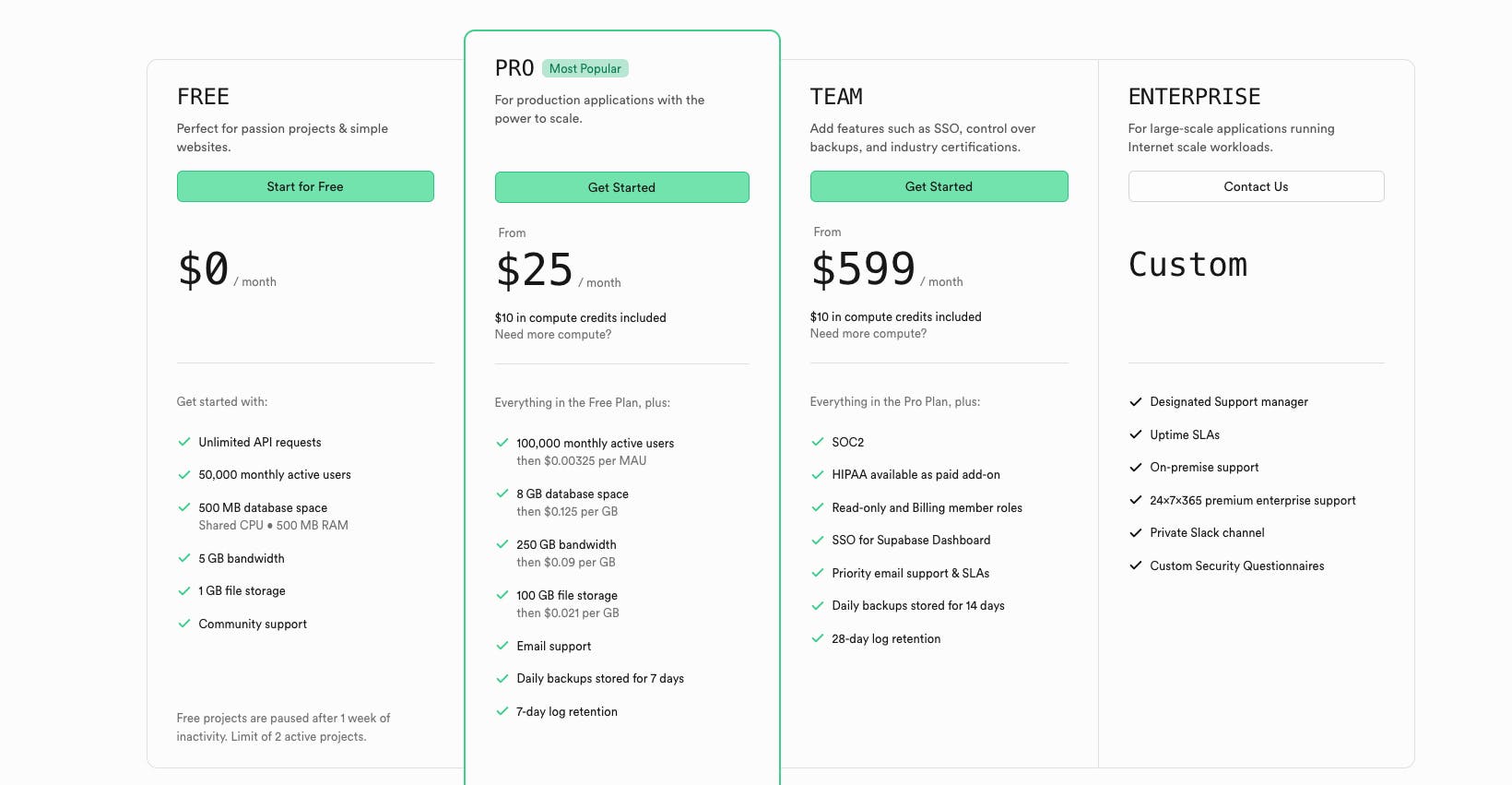
Source: Supabase
Supabase operates on a freemium model, offering a free tier along with three other paid tiers to cater to the different needs of developers and organizations.
Free Plan: The free tier is ideal for startups and individual developers who want to build and test their applications without incurring significant costs. It offers features such as unlimited API requests for up to 50K MAUs, 500MB of database space, 5GB of bandwidth, and 1GB of file storage, enabling users to create and deploy functional applications.
Pro Plan: The Pro plan, at $25 per month, is tailored for production applications that need to scale. With support for 100K MAUs (and additional charges for more), 8GB of database space, 250GB of bandwidth, 100GB of file storage, and daily backups, the Pro plan provides resources for growing businesses. The spend cap feature helps users control costs, while the option to disable it allows for scaling beyond the included quota.
Team Plan: For larger teams with more complex needs, Supabase's Team plan, priced at $599 per month, builds upon the Pro plan's offerings. It includes features like SOC2 compliance, read-only and billing member roles, priority email support, and 28-day log retention. This plan is suitable for organizations that require enhanced security, compliance, and support.
Enterprise Plan: Enterprise customers with specific workload requirements can use Supabase's customized pricing and premium features. The Enterprise plan includes features like 24/7/365 support, a private Slack channel, and on-premise support, enabling the highest level of assistance and reliability for large-scale applications.
Supabase's pricing model also considers the need for additional performance when scaling. Compute add-ons are priced based on CPU usage, allocated memory, connection volume, and maximum database size. The $10 monthly compute credit aims to help offset the cost of a Micro instance or other compute add-ons, providing flexibility and cost-effectiveness for businesses of all sizes.
Traction

Source: Supabase
Supabase has witnessed growth in database management, community members, a freemium model, and enterprise adoption since its launch.
As of April 2024, Supabase had reached significant milestones, managing over one million databases and launching more than 2.5K new databases daily, representing substantial growth from when Supabase only managed eight databases in 2020. The company also secured a spot in the Top 125 GitHub Ranking, demonstrating its popularity among developers.
Supabase's open-source community has played a crucial role in its growth, with developers actively contributing to the platform's development. Supabase had over 65K GitHub stars as of April 2024, which has grown more than 10x from 5.5K GitHub stars in 2020. Developers have been instrumental in submitting feature requests, identifying bugs, and creating pull requests, driving the platform's continuous improvement.
The company's free tier has been a significant growth driver, attracting developers looking to explore alternatives to existing solutions like Firebase. Almost all the largest databases on Supabase began on the free plan, showcasing the platform's appeal to those seeking to trial and scale their applications.
Since April 2023, 12 companies have started on Supabase and scaled from zero to over one million users. Notable AI companies leveraging Supabase include Udio, Krea, Humata, Chatbase, Pika, Quivr, Mendable, Markprompt, and Mozilla.
Enterprise adoption has also been a key focus for Supabase, with the platform supporting the needs of large-scale organizations. Companies such as 1Password, PwC, and Johnson & Johnson rely on Supabase to build applications on top of Postgres.
Valuation
In May 2022, Supabase raised an $80 million Series B led by Felicis Ventures with participation from Coatue and Lightspeed at an undisclosed valuation. The company’s total funding totals $116.1 million as of August 2024.
Supabase previously raised a $30 million Series A led by Coatue in September 2021 following the company’s seed round just seven months prior, a $6 million round in December 2020. Other notable investors in Supabase include GitHub co-founder Tom Preston-Werner, PagerDuty co-founder Alex Solomon, and Docker co-founder Solomon Hykes.
Key Opportunities
Enhancing Enterprise Offerings
Supabase launched a product catering to the needs of enterprise customers in March 2022. As more large-scale organizations adopt Supabase for building applications on top of Postgres, the company has invested in features and services that address enterprise requirements: enhanced security and compliance measures, service level agreements (SLAs), and dedicated enterprise support.
To further capitalize on this opportunity, Supabase plans to build credibility by demonstrating its ability to handle scalability and reliability demands of two key customer segments: startups (looking to build and scale products until IPO) and enterprise customers. Supabase aims to establish itself as the go-to choice for companies seeking Postgres-based solutions by showcasing successful enterprise deployments and accumulating a portfolio of recognizable enterprise clients. Additionally, the company has begun implementing various deployment options, including self-hosting, to allow customers to run Supabase on their existing infrastructure, providing greater flexibility and control for enterprise clients.
Expanding the Postgres Ecosystem
Supabase is positioned to become a leader in the Postgres ecosystem by providing a full-service solution that enables companies to overcome the limitations of NoSQL databases and enhance their applications.
Real-world examples demonstrate how Supabase's Postgres-based platform is addressing complex data challenges. Mobbin, for instance, migrated from Firebase to Supabase to address issues with duplicate user logins and data integrity. Similarly, Voypost used Supabase to build a product called Inkly, which initially encountered complexities due to the relational nature of its data when developed using Firebase, requiring numerous NoSQL workarounds.
In addition to these customer success stories, Supabase CEO Paul Copplestone has outlined plans to advance several key product areas built on the Postgres ecosystem. One crucial area is enhancing Advisor support, such as the Postgres Index Advisor, which helps developers optimize query performance, and the Performance Advisor, which suggests database optimizations. These tools aim to improve the developer experience and make Supabase a resource for Postgres users.
Copplestone also mentioned providing more features for authentication and storage, improving the types of data that people want to store (e.g. logs), adding more integrations, and increasing adoption of their branching platform feature. By addressing these key areas, Supabase aims to create a more comprehensive and user-friendly Postgres ecosystem that caters to the diverse needs of developers and businesses.
Open Source Adoption
Supabase's growth has been fueled by its open-source community, which actively contributes to the platform's development by reporting issues, suggesting new features, and providing feedback during product launches during Supabase’s launch weeks. Supabase's community of developers is actively creating projects and sharing their experiences with the platform. This organic growth of user-generated content and tutorials serves as a marketing tool, attracting new users and showcasing the platform's capabilities. This collaborative approach has allowed Supabase to iterate quickly and improve its offerings based on real-world user experiences.
The company's commitment to open source was showcased during a 10-day hackathon, where developers created innovative projects using Supabase. The winning project enabled developers to convert database diagrams into SQL schema using a Vision API, demonstrating the power and flexibility of the platform. Other notable projects included an open-source tool for creating and integrating HTML components with Supabase as the backend and a style companion that suggests apparel based on uploaded images.
The open-source nature of Supabase provides several advantages over proprietary solutions. Developers can access and modify the source code, allowing for greater customization and understanding of how the platform works. This transparency fosters collaboration and enables developers to troubleshoot issues more effectively. Additionally, open-source software often has lower initial costs and greater flexibility for scaling projects, making it an attractive option for both individual developers and enterprises.
Embracing AI
The rapid advancements in artificial intelligence (AI) and machine learning (ML) present a significant opportunity for Supabase. With its open-source vector database, Supabase enables developers to streamline AI application development, including providing connections to LLMs like ChatGPT plugins.
Existing customer Berri AI, which provides an API for businesses to create custom ChatGPT instances on their data, migrated from Amazon’s RDS to Supabase Vector after experiencing challenges with self-hosting on RDS. This is a significant win for Supabase as it aims to gain market share from incumbent competitors like Amazon and Google.
Similarly, other companies have leveraged Supabase to launch vector databases and build AI tools. The founder of Quivr opted to use Supabase given his familiarity with Postgres and launched 5K vector databases on Supabase after evaluating alternatives like Pinecone and Chroma. Meanwhile, MDN partnered with Supabase to develop its AI Help tool.
Key Risks
Competition
One of the significant risks Supabase faces is competition from established players in the BaaS market, particularly Firebase. As a Google product, Firebase has an extensive market presence, comprehensive documentation, and strong community support. It provides a wide range of features and integrations, some of which Supabase has yet to implement, such as built-in analytics and cloud messaging.
Firebase has also launched Firebase Genkit, an open-source framework that facilitates the adoption of generative AI use cases. Genkit comes with support for models like Google’s Gemini and Gemma, enabling developers to create applications that integrate with intelligent agents, automate customer support, and utilize semantic search. With the Genkit’s command-line interface, developers can use the developer UI to run workflows locally, interacting with components ranging from models, prompts, indexers, retrievers, and tools. Genkit integrates with the rest of the Firebase toolchain and supports third-party open-source projects like Chroma, Pinecone, and PostgreSQL's pgvector.
Additionally, Firebase's Run product suite includes A/B testing, crashlytics, native analytics, performance monitoring, and remote configuration. These features enable developers to launch, monitor, and iterate their applications with AI-assistive tools, optimizing for quality and user experience. Firebase also enables developers to distribute pre-release versions of applications for early feedback and error detection by testing on devices that simulate actual usage environments.
Other competitors in the BaaS market, such as Nhost, Etebase, and Hasura, also pose a threat to Supabase. These platforms offer unique features like end-to-end encryption, GraphQL support, and compatibility with multiple databases not just Postgres, which may attract developers with specific requirements.
Developer Experience
Another key risk for Supabase is the potential for developer experience issues to hinder adoption and growth. Developers trialing Supabase have reported concerns related to performance, feature parity between local and remote environments, migration, and authentication. A key piece of Supabase’s growth and adoption has come from the open-source developer community; therefore, providing an exemplary experience will be necessary for Supabase to scale.
One limitation of Supabase is its lack of support for long-running database transactions and relational inserts. In simpler terms, this means that developers cannot easily group multiple database operations together as a single, atomic unit of work. This limitation can lead to potential data inconsistencies and conflicts when multiple users or processes are accessing and modifying the same data simultaneously.
To work around this issue, developers are advised to implement complex transaction logic directly within the database using remote procedure calls. However, this approach can lead to fragmented code, with business logic spread across the application and the database. This fragmentation can make the codebase harder to maintain, debug, and evolve over time, potentially slowing down development and increasing the risk of bugs and errors.
Another workaround is that developers can use another object relational mapper (ORM) instead of Supabase’s ORM. An ORM is a piece of software designed to bridge the gap between the way data is stored in databases and the way it is used in object-oriented programming languages, by converting database data into objects that can be easily manipulated by the programming language.
Third Party Reliance
Supabase's reliance on Deno as the basis for its Edge Functions has raised concerns among developers. The steep learning curve and sparse documentation around setting up Deno and Edge Functions have led to issues with node package manager (an open-source registry and library for JavaScript software package) support, running multiple functions for local development, and limited context for errors. This technological risk could potentially limit the adoption of Supabase's Edge Functions and hinder the platform's overall growth.
Furthermore, as the technology landscape rapidly evolves, there is a risk that some of the core technologies Supabase relies on, such as Postgres and Deno, could become obsolete or less popular in the future.
Summary
Supabase is an open-source BaaS platform built entirely on Postgres that provides a platform for building scalable applications, including authentication, file storage, real-time data synchronization, and integration with machine learning models. By eliminating the complexities of backend infrastructure management, Supabase enables developers to focus on building their applications without worrying about the nuances of routing, databases, authentication, authorization, and access control. The platform has gained popularity among a diverse range of users, from independent developers to enterprise teams, who appreciate the platform's flexibility and iterative growth.
However, Supabase faces challenges in an increasingly competitive market, where established players like Firebase and emerging open-source alternatives vie for developer attention. To maintain its growth trajectory, Supabase must continue to innovate and expand its feature set while providing a positive developer experience. This includes enhancing its enterprise offerings, expanding the Postgres ecosystem, and embracing the open-source community, developer-first tools, and AI revolution.
Overall, Supabase has demonstrated potential as a BaaS platform, and its focus on simplifying application development has resonated with developers across various skill levels and industries. As the company continues to refine its offerings and engage with the open-source community, it has the opportunity to solidify its position as a leading player in the BaaS market. However, it must address the key risks of competition and developer experience to ensure its long-term success.
